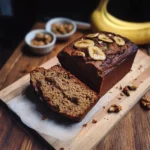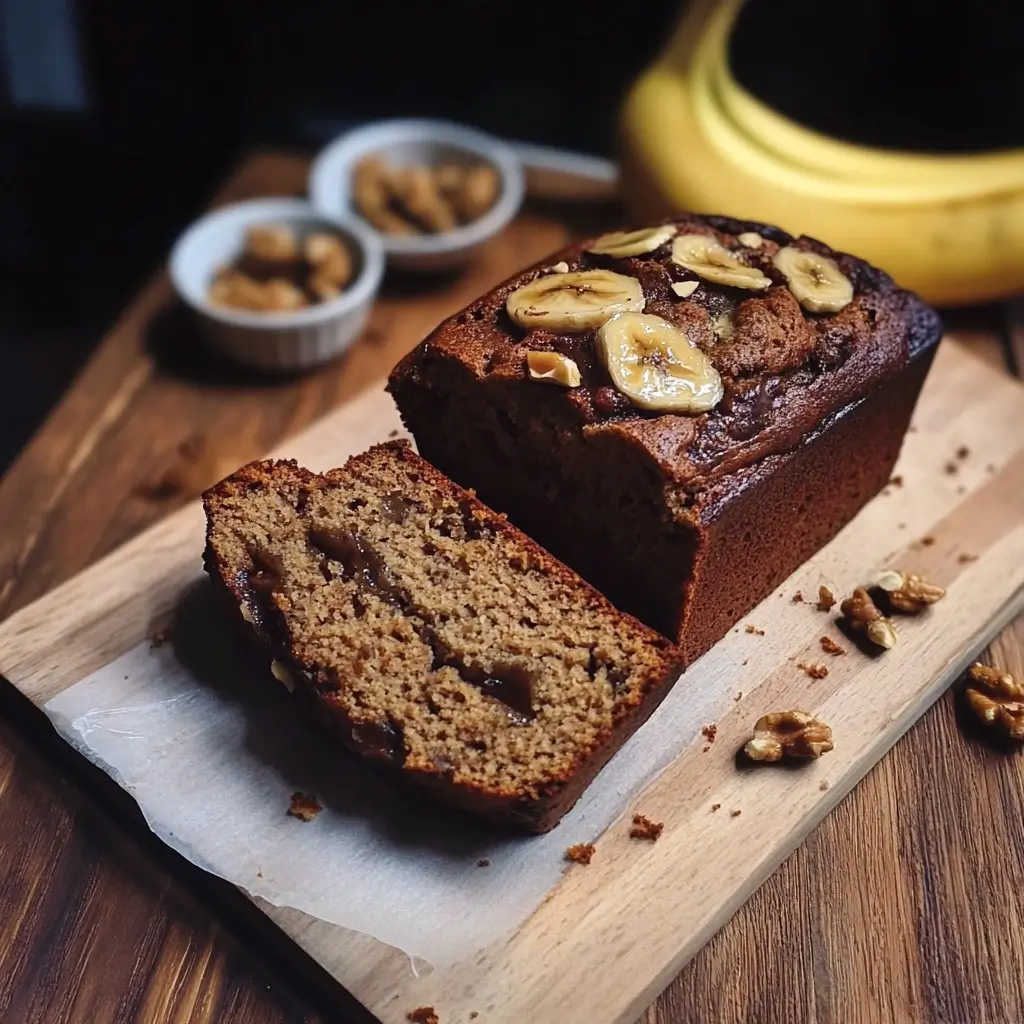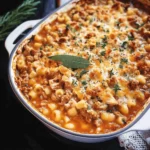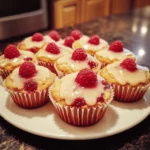After a long week, there’s nothing quite like the comforting aroma of freshly baked banana bread wafting through the house. For years, my family has adored my classic banana bread recipe, but recently, we’ve been exploring more plant-based options. That’s when I stumbled upon this eggless banana bread recipe, and let me tell you, it’s been a game-changer. Initially, I was skeptical – could an eggless version truly deliver the same moistness and delightful texture we loved? The answer, unequivocally, is yes! From the first bite, we were hooked. The bread is incredibly tender, bursting with banana flavor, and has a subtle sweetness that isn’t overpowering. Even my egg-loving husband declared it a winner, and my kids devoured slice after slice. This recipe has become a staple in our home, perfect for a weekend brunch, an afternoon snack, or even a light dessert. It’s surprisingly easy to make, and the results are consistently delicious. If you’re looking for a foolproof, eggless banana bread that will impress everyone, look no further – you’ve found it!
Ingredients
Creating the perfect eggless banana bread starts with gathering the right ingredients, and understanding why each one plays a crucial role in the final outcome. While seemingly simple, each component contributes to the bread’s texture, flavor, and overall deliciousness. Let’s delve into each ingredient, exploring its purpose and offering insights for optimal results.
For the Dry Ingredients:
- 2 cups (250g) All-Purpose Flour: Flour forms the structural backbone of our banana bread. All-purpose flour strikes a good balance for a tender yet sturdy crumb. It provides the necessary gluten development to hold the bread together. When measuring flour, it’s important to do so correctly. Spoon the flour into your measuring cup and level it off with a straight edge. Avoid scooping directly from the bag, as this can compact the flour and lead to using too much, resulting in a dry bread. For a slightly denser and more wholesome bread, you can substitute up to half of the all-purpose flour with whole wheat flour. However, keep in mind that whole wheat flour can absorb more liquid, so you might need to slightly increase the liquid ingredients if you opt for this substitution.
- 1 teaspoon Baking Soda: Baking soda is a chemical leavening agent that reacts with acidic ingredients (like bananas and brown sugar) to produce carbon dioxide gas, which makes the bread rise. It’s crucial to use fresh baking soda for optimal leavening power. To test if your baking soda is still active, drop a small amount into hot water. If it fizzes vigorously, it’s good to use. If not, it’s time to replace it. Baking soda also contributes to the bread’s texture and browning.
- 1/2 teaspoon Baking Powder: While baking soda is the primary leavening agent in this recipe, baking powder provides a little extra lift and ensures a lighter crumb. Baking powder is a complete leavening agent, meaning it contains both an acid and a base, and only requires moisture to activate. Using both baking soda and baking powder creates a beautifully balanced rise in the banana bread.
- 1 teaspoon Ground Cinnamon: Cinnamon is the quintessential spice for banana bread, adding warmth, depth, and a comforting aroma. It perfectly complements the sweetness of the bananas and brown sugar. Use good quality ground cinnamon for the best flavor. For a more complex spice profile, you can also add a pinch of nutmeg or cloves along with the cinnamon.
- 1/4 teaspoon Ground Nutmeg (Optional): While optional, a hint of nutmeg enhances the warm spice notes of the banana bread, adding a subtle layer of complexity. Freshly grated nutmeg is always preferable for its brighter, more aromatic flavor, but ground nutmeg works well too. Be careful not to add too much nutmeg, as it can be quite potent.
- 1/2 teaspoon Salt: Salt is a flavor enhancer in baking. It balances the sweetness, enhances the other flavors, and controls the yeast activity in recipes that use yeast (though not in this eggless banana bread). In this recipe, salt is essential to bring out the banana and spice flavors and prevent the bread from tasting bland. Use fine sea salt or table salt.
For the Wet Ingredients:
- 3 very ripe Bananas, mashed (about 1 1/2 cups): The star of the show! Ripe bananas are absolutely crucial for moist and flavorful banana bread. The riper the bananas, the sweeter and more flavorful they will be, and the easier they are to mash. Look for bananas with brown spots all over the peel – these are perfect for baking. Green bananas will be too starchy and won’t provide the same level of sweetness or moisture. Overripe bananas also contribute to the bread’s tenderness due to their high pectin content. To quickly ripen bananas, you can place them in a paper bag with an apple or a few ripe bananas for a day or two.
- 3/4 cup (150g) Granulated Sugar: Granulated sugar adds sweetness, moisture, and tenderness to the banana bread. It also helps with browning and creates a slightly crisp crust. You can adjust the amount of sugar slightly to your preference, but reducing it too much might affect the texture and browning.
- 1/2 cup (100g) Packed Light Brown Sugar: Brown sugar adds a richer, molasses-like sweetness and moisture to the banana bread. It also contributes to a softer texture and a deeper color. Packed light brown sugar is preferred for its balanced sweetness and moisture content. Make sure to pack the brown sugar firmly into the measuring cup to ensure accurate measurement.
- 1/2 cup (120ml) Vegetable Oil: Vegetable oil provides moisture and tenderness to the banana bread, contributing to its soft crumb. Use a neutral-flavored oil like canola oil, vegetable oil, or sunflower oil. You can also use melted coconut oil for a subtle coconut flavor, but be aware that coconut oil can solidify at cooler temperatures, which might slightly affect the texture of the bread if stored in the refrigerator. For a richer flavor, you can substitute half of the vegetable oil with melted unsalted butter or vegan butter, but this will no longer be a purely vegan recipe if you use dairy butter.
- 1/2 cup (120ml) Milk (Dairy or Non-Dairy): Milk adds moisture and helps to bind the ingredients together. You can use dairy milk or any non-dairy milk alternative like almond milk, soy milk, oat milk, or coconut milk. Non-dairy milks work equally well in this recipe and make it suitable for vegans and those with dairy sensitivities. The type of milk you choose won’t significantly alter the flavor of the bread, so use whichever you prefer or have on hand.
- 2 teaspoons Vanilla Extract: Vanilla extract enhances the overall flavor of the banana bread, adding a touch of warmth and sweetness. Use pure vanilla extract for the best flavor. Imitation vanilla extract can be used in a pinch, but the flavor won’t be as rich or complex. For an even more intense vanilla flavor, you can use vanilla bean paste or scrape the seeds from a vanilla bean.
- 1 tablespoon Apple Cider Vinegar or Lemon Juice: This might seem like an unusual ingredient in banana bread, but apple cider vinegar or lemon juice is essential in eggless baking. It reacts with the baking soda to create lift and adds a slight tang that balances the sweetness of the bread. The acidity helps to tenderize the gluten and create a softer texture. You won’t taste the vinegar or lemon juice in the final product.
Optional Add-ins (for extra flavor and texture):
- 1 cup (100-150g) Chocolate Chips or Chunks: Chocolate and banana are a classic pairing. Adding chocolate chips or chunks elevates the banana bread to a more decadent treat. Use semi-sweet, milk, or dark chocolate chips, depending on your preference. Chocolate chunks create a more melty, gooey texture.
- 1 cup (100g) Chopped Walnuts or Pecans: Nuts add a delightful crunch and nutty flavor to the banana bread. Walnuts and pecans are classic choices, but you can also use other nuts like almonds, hazelnuts, or macadamia nuts. Toast the nuts lightly before chopping to enhance their flavor.
Instructions
Now that we’ve gathered our ingredients and understand their roles, let’s move on to the step-by-step instructions for baking this delightful eggless banana bread. Following these instructions carefully will ensure a moist, flavorful, and perfectly textured loaf every time.
Step 1: Preheat the Oven and Prepare the Pan
Begin by preheating your oven to 350°F (175°C). This is a crucial first step as it allows the oven to reach the correct temperature before you place the banana bread in to bake. A preheated oven ensures even baking and prevents the bread from spreading too much.
While the oven is preheating, prepare your loaf pan. Grease a standard 9×5 inch loaf pan thoroughly with cooking spray, butter, or oil. Then, dust it lightly with flour, tapping out any excess. This prevents the banana bread from sticking to the pan and makes it easy to remove once baked. For extra insurance against sticking, you can line the bottom of the pan with parchment paper, leaving an overhang on the sides to use as handles for lifting the baked bread out.
Step 2: Mash the Bananas
In a large mixing bowl, place the ripe bananas. Using a fork or a potato masher, mash the bananas until they are mostly smooth but still have some small chunks. A little bit of texture from the bananas adds to the overall appeal of the bread. Avoid over-mashing the bananas into a complete puree, as this can make the bread slightly gummy. You should aim for about 1 1/2 cups of mashed bananas.
Step 3: Combine Wet Ingredients
To the bowl with the mashed bananas, add the granulated sugar, brown sugar, vegetable oil, milk (dairy or non-dairy), vanilla extract, and apple cider vinegar or lemon juice. Using a whisk or a spatula, mix these wet ingredients together until they are well combined. Ensure that the sugars are mostly dissolved and the mixture is smooth.
Step 4: Whisk Dry Ingredients
In a separate medium-sized bowl, whisk together the all-purpose flour, baking soda, baking powder, ground cinnamon, ground nutmeg (if using), and salt. Whisking the dry ingredients ensures that they are evenly distributed and that there are no clumps of baking soda or baking powder, which could lead to uneven leavening or pockets of bitterness in the bread.
Step 5: Combine Wet and Dry Ingredients
Gradually add the dry ingredients to the wet ingredients, mixing with a spatula or wooden spoon until just combined. Be careful not to overmix the batter. Overmixing can develop the gluten in the flour too much, resulting in a tough and dense banana bread. Mix until the dry ingredients are just incorporated into the wet ingredients, and a few streaks of flour are still visible.
Step 6: Fold in Optional Add-ins
If you are using chocolate chips, nuts, or any other optional add-ins, gently fold them into the batter using a spatula until they are evenly distributed. Again, be careful not to overmix at this stage.
Step 7: Pour Batter into Prepared Pan
Pour the banana bread batter into the prepared loaf pan, spreading it evenly with a spatula. If desired, you can sprinkle some extra chocolate chips, chopped nuts, or a dusting of cinnamon sugar on top of the batter before baking for added visual appeal and flavor.
Step 8: Bake the Banana Bread
Place the loaf pan in the preheated oven and bake for 50-60 minutes, or until a wooden skewer inserted into the center of the bread comes out clean or with just a few moist crumbs attached. The baking time may vary slightly depending on your oven and the pan you are using. Start checking for doneness around 50 minutes and continue baking until the skewer test is positive. The top of the banana bread should be golden brown and slightly cracked.
Step 9: Cool in Pan and Serve
Once baked, remove the loaf pan from the oven and let it cool in the pan for 10-15 minutes. This allows the bread to firm up slightly and makes it easier to remove from the pan. After the initial cooling period, carefully invert the banana bread onto a wire rack to cool completely. Cooling the bread completely on a wire rack prevents the bottom from becoming soggy.
Once the banana bread is completely cooled, it’s ready to slice and serve. Enjoy it as is, or with your favorite toppings. Store leftover banana bread in an airtight container at room temperature for up to 3-4 days, or in the refrigerator for up to a week. You can also freeze slices of banana bread for longer storage.
Nutrition Facts
Understanding the nutritional content of your baked goods can be helpful, especially if you are mindful of your dietary intake. Please note that these are approximate values and can vary slightly depending on the specific ingredients used (e.g., type of milk, brand of ingredients, add-ins).
Servings: 12 slices
Approximate Nutrition Facts per Serving (per slice):
- Calories: 250-300 kcal (depending on ingredients and serving size)
- Total Fat: 10-15g
- Saturated Fat: 2-4g
- Unsaturated Fat: 8-11g
- Cholesterol: 0mg
- Sodium: 200-250mg
- Total Carbohydrates: 35-40g
- Dietary Fiber: 1-2g
- Sugars: 18-22g (from added sugars and bananas)
- Protein: 3-4g
Important Notes:
- These values are estimates and can vary based on ingredient brands and specific recipe variations.
- Adding chocolate chips, nuts, or other add-ins will increase the calorie and fat content.
- This recipe is eggless and can be made dairy-free by using non-dairy milk, making it suitable for vegan diets.
- Banana bread, while delicious, should be enjoyed in moderation as part of a balanced diet.
Preparation Time
The beauty of this eggless banana bread recipe lies not only in its delicious taste but also in its simplicity and relatively quick preparation time. From start to finish, you can have a warm, fragrant loaf of banana bread ready to enjoy in just over an hour.
Total Time: Approximately 1 hour 15 minutes
Breakdown:
- Prep Time: 20 minutes (This includes gathering ingredients, mashing bananas, measuring and mixing dry and wet ingredients, and preparing the loaf pan).
- Bake Time: 50-60 minutes (This is the time the banana bread spends baking in the oven. The exact time can vary slightly depending on your oven and pan).
- Cooling Time: 15 minutes (Initial cooling in the pan before transferring to a wire rack).
Tips to Speed Up Preparation:
- Use very ripe bananas: Ripe bananas mash easily, saving you time.
- Measure ingredients in advance: Having your ingredients pre-measured can streamline the mixing process.
- Don’t overmix: Overmixing is unnecessary and can actually make the bread tougher. Mix just until combined.
- While the bread bakes, clean up: Use the baking time to clean up your kitchen, so you can enjoy your freshly baked banana bread in a tidy space.
This recipe is perfect for those times when you crave a homemade treat but are short on time. It’s quick enough to whip up on a weekday evening or a weekend morning without spending hours in the kitchen.
How to Serve
Eggless banana bread is incredibly versatile and can be enjoyed in countless ways. Whether you prefer a simple slice on its own or want to elevate it with various toppings and pairings, here are some delightful serving suggestions to enhance your banana bread experience:
- Classic Slice:
- Enjoy a warm or cooled slice of banana bread as is. The simple flavors shine through beautifully on their own.
- Perfect for breakfast, a mid-morning snack, or an afternoon treat with a cup of tea or coffee.
- Toasted with Butter:
- Lightly toast a slice of banana bread until golden brown and slightly crispy.
- Spread with a pat of butter (dairy or vegan) for a richer, more indulgent flavor.
- The warmth of the toast melts the butter and enhances the banana bread’s aroma.
- With Cream Cheese Frosting:
- For a more decadent dessert, top slices of banana bread with cream cheese frosting.
- The tangy cream cheese frosting complements the sweetness of the banana bread perfectly.
- You can make a simple cream cheese frosting with cream cheese, powdered sugar, vanilla extract, and a touch of milk or cream.
- Paired with Yogurt and Fruit:
- Create a healthier and more balanced snack or breakfast by pairing banana bread with yogurt and fresh fruit.
- Serve slices of banana bread alongside Greek yogurt, plain yogurt, or vegan yogurt.
- Top with fresh berries, sliced bananas, peaches, or any fruit you enjoy.
- A drizzle of honey or maple syrup can add extra sweetness if desired.
- Warm with Ice Cream:
- For a truly indulgent dessert, serve warm slices of banana bread with a scoop of vanilla ice cream or your favorite flavor.
- The warm bread and cold ice cream create a delightful contrast in temperature and texture.
- Add a drizzle of caramel sauce, chocolate sauce, or a sprinkle of chopped nuts for extra flair.
- As French Toast:
- Transform leftover banana bread into a delicious French toast.
- Slice the banana bread into slightly thicker slices.
- Dip the slices in a mixture of eggs (or flax egg for vegan), milk (dairy or non-dairy), vanilla extract, and cinnamon.
- Cook on a lightly greased griddle or pan until golden brown on both sides.
- Serve with maple syrup, fresh fruit, or whipped cream.
- With Nut Butter:
- Spread your favorite nut butter (peanut butter, almond butter, cashew butter) on a slice of banana bread for a protein-rich and satisfying snack.
- The creamy nut butter complements the moist texture of the banana bread and adds a nutty flavor.
Additional Tips for Perfect Eggless Banana Bread
Baking eggless banana bread is generally straightforward, but a few key tips can elevate your results from good to exceptional. Here are five additional tips to ensure your banana bread is moist, flavorful, and utterly irresistible every time:
- Don’t Skimp on the Ripe Bananas: As mentioned earlier, ripe bananas are the heart and soul of banana bread. The more ripe they are, the sweeter and more flavorful your bread will be. Look for bananas with plenty of brown spots – they might not look pretty, but they are perfect for baking. Overripe bananas are also easier to mash and contribute to the moistness of the bread. If your bananas are not quite ripe enough, you can speed up the ripening process by placing them in a paper bag with an apple or a ripe banana for a day or two.
- Measure Flour Correctly: Properly measuring flour is crucial in baking. Too much flour can result in a dry, dense banana bread. The best way to measure flour is using the “spoon and level” method. Spoon the flour lightly into your measuring cup until it is overflowing, then level off the excess with a straight edge, like the back of a knife. Avoid scooping the flour directly from the bag, as this can compact it and lead to using too much flour. If you have a kitchen scale, using weight measurements for flour (250g for 2 cups) is even more accurate.
- Don’t Overmix the Batter: Overmixing the batter can develop the gluten in the flour, resulting in a tough and chewy banana bread. Mix the wet and dry ingredients together just until they are combined and no large streaks of flour remain. It’s okay if the batter is slightly lumpy. Once you add the optional add-ins like chocolate chips or nuts, fold them in gently until just distributed. Overmixing is a common mistake that can easily be avoided by being mindful during the mixing process.
- Check for Doneness Properly: Overbaked banana bread can be dry and crumbly, while underbaked banana bread can be gummy in the center. To check for doneness, insert a wooden skewer or toothpick into the center of the bread. If it comes out clean or with just a few moist crumbs attached, the bread is done. If it comes out with wet batter, bake for a few more minutes and check again. Start checking for doneness around 50 minutes of baking time and adjust accordingly.
- Cool Completely Before Slicing (If Possible): While it’s tempting to slice into warm banana bread, allowing it to cool completely, or at least mostly, before slicing will result in cleaner slices and a better texture. Warm banana bread can be a bit crumbly and harder to slice neatly. Cooling allows the bread to firm up slightly, making it easier to handle and slice. If you can resist the urge, let it cool completely on a wire rack before slicing and serving.
Frequently Asked Questions (FAQ)
Baking, especially eggless baking, can sometimes bring up questions. Here are answers to some frequently asked questions about this eggless banana bread recipe to help you bake with confidence:
Q1: Can I substitute the vegetable oil with another oil or melted butter?
A: Yes, you can substitute vegetable oil with other neutral oils like canola oil, sunflower oil, or even melted coconut oil. Melted unsalted butter (or vegan butter for a vegan version) can also be used for a richer flavor, but keep in mind that butter will add saturated fat. Olive oil is generally not recommended as it can have a stronger flavor that might compete with the banana bread.
Q2: Can I use different types of sugar?
A: While granulated sugar and light brown sugar are recommended for this recipe, you can make some substitutions. You can use all granulated sugar or all light brown sugar if you prefer, but the combination of both provides a balanced sweetness and moisture. Dark brown sugar will result in a richer, more molasses-like flavor. You can also experiment with unrefined sugars like coconut sugar or maple sugar, but these may slightly alter the texture and moisture content.
Q3: My banana bread is sinking in the middle. What did I do wrong?
A: Sinking in the middle can be due to several factors:
- Oven temperature: If your oven temperature is too low, the bread might not set properly and could sink. Ensure your oven is preheated to the correct temperature and that your oven thermometer is accurate.
- Overmixing: Overmixing the batter can develop too much gluten, leading to a weak structure that might collapse during baking.
- Too much leavening agent: Using too much baking soda or baking powder can cause the bread to rise too quickly and then collapse. Make sure to measure leavening agents accurately.
- Too much moisture: Too many mashed bananas or too much liquid can make the batter too heavy and prone to sinking. Stick to the recommended measurements in the recipe.
Q4: How do I store leftover banana bread?
A: To store leftover banana bread, let it cool completely, then wrap it tightly in plastic wrap or place it in an airtight container. Store it at room temperature for up to 3-4 days or in the refrigerator for up to a week. Refrigeration can make the bread slightly drier, so you might want to warm it up slightly before serving if stored in the fridge. For longer storage, you can freeze slices of banana bread for up to 2-3 months. Wrap slices individually in plastic wrap and then place them in a freezer-safe bag or container. Thaw at room temperature or in the microwave before serving.
Q5: Can I make this recipe gluten-free?
A: Yes, you can adapt this recipe to be gluten-free by substituting the all-purpose flour with a gluten-free all-purpose flour blend. Choose a blend that is designed for baking and contains xanthan gum or guar gum, which help to mimic the structure of gluten. Follow the recipe instructions as written, but keep in mind that gluten-free baked goods can sometimes have a slightly different texture than those made with wheat flour. You might need to experiment with different gluten-free flour blends to find one you prefer.
Print
Eggless Banana Bread Recipe
Ingredients
For the Dry Ingredients:
- 2 cups (250g) All-Purpose Flour: Flour forms the structural backbone of our banana bread. All-purpose flour strikes a good balance for a tender yet sturdy crumb. It provides the necessary gluten development to hold the bread together. When measuring flour, it’s important to do so correctly. Spoon the flour into your measuring cup and level it off with a straight edge. Avoid scooping directly from the bag, as this can compact the flour and lead to using too much, resulting in a dry bread. For a slightly denser and more wholesome bread, you can substitute up to half of the all-purpose flour with whole wheat flour. However, keep in mind that whole wheat flour can absorb more liquid, so you might need to slightly increase the liquid ingredients if you opt for this substitution.
- 1 teaspoon Baking Soda: Baking soda is a chemical leavening agent that reacts with acidic ingredients (like bananas and brown sugar) to produce carbon dioxide gas, which makes the bread rise. It’s crucial to use fresh baking soda for optimal leavening power. To test if your baking soda is still active, drop a small amount into hot water. If it fizzes vigorously, it’s good to use. If not, it’s time to replace it. Baking soda also contributes to the bread’s texture and browning.
- 1/2 teaspoon Baking Powder: While baking soda is the primary leavening agent in this recipe, baking powder provides a little extra lift and ensures a lighter crumb. Baking powder is a complete leavening agent, meaning it contains both an acid and a base, and only requires moisture to activate. Using both baking soda and baking powder creates a beautifully balanced rise in the banana bread.
- 1 teaspoon Ground Cinnamon: Cinnamon is the quintessential spice for banana bread, adding warmth, depth, and a comforting aroma. It perfectly complements the sweetness of the bananas and brown sugar. Use good quality ground cinnamon for the best flavor. For a more complex spice profile, you can also add a pinch of nutmeg or cloves along with the cinnamon.
- 1/4 teaspoon Ground Nutmeg (Optional): While optional, a hint of nutmeg enhances the warm spice notes of the banana bread, adding a subtle layer of complexity. Freshly grated nutmeg is always preferable for its brighter, more aromatic flavor, but ground nutmeg works well too. Be careful not to add too much nutmeg, as it can be quite potent.
- 1/2 teaspoon Salt: Salt is a flavor enhancer in baking. It balances the sweetness, enhances the other flavors, and controls the yeast activity in recipes that use yeast (though not in this eggless banana bread). In this recipe, salt is essential to bring out the banana and spice flavors and prevent the bread from tasting bland. Use fine sea salt or table salt.
For the Wet Ingredients:
- 3 very ripe Bananas, mashed (about 1 1/2 cups): The star of the show! Ripe bananas are absolutely crucial for moist and flavorful banana bread. The riper the bananas, the sweeter and more flavorful they will be, and the easier they are to mash. Look for bananas with brown spots all over the peel – these are perfect for baking. Green bananas will be too starchy and won’t provide the same level of sweetness or moisture. Overripe bananas also contribute to the bread’s tenderness due to their high pectin content. To quickly ripen bananas, you can place them in a paper bag with an apple or a few ripe bananas for a day or two.
- 3/4 cup (150g) Granulated Sugar: Granulated sugar adds sweetness, moisture, and tenderness to the banana bread. It also helps with browning and creates a slightly crisp crust. You can adjust the amount of sugar slightly to your preference, but reducing it too much might affect the texture and browning.
- 1/2 cup (100g) Packed Light Brown Sugar: Brown sugar adds a richer, molasses-like sweetness and moisture to the banana bread. It also contributes to a softer texture and a deeper color. Packed light brown sugar is preferred for its balanced sweetness and moisture content. Make sure to pack the brown sugar firmly into the measuring cup to ensure accurate measurement.
- 1/2 cup (120ml) Vegetable Oil: Vegetable oil provides moisture and tenderness to the banana bread, contributing to its soft crumb. Use a neutral-flavored oil like canola oil, vegetable oil, or sunflower oil. You can also use melted coconut oil for a subtle coconut flavor, but be aware that coconut oil can solidify at cooler temperatures, which might slightly affect the texture of the bread if stored in the refrigerator. For a richer flavor, you can substitute half of the vegetable oil with melted unsalted butter or vegan butter, but this will no longer be a purely vegan recipe if you use dairy butter.
- 1/2 cup (120ml) Milk (Dairy or Non-Dairy): Milk adds moisture and helps to bind the ingredients together. You can use dairy milk or any non-dairy milk alternative like almond milk, soy milk, oat milk, or coconut milk. Non-dairy milks work equally well in this recipe and make it suitable for vegans and those with dairy sensitivities. The type of milk you choose won’t significantly alter the flavor of the bread, so use whichever you prefer or have on hand.
- 2 teaspoons Vanilla Extract: Vanilla extract enhances the overall flavor of the banana bread, adding a touch of warmth and sweetness. Use pure vanilla extract for the best flavor. Imitation vanilla extract can be used in a pinch, but the flavor won’t be as rich or complex. For an even more intense vanilla flavor, you can use vanilla bean paste or scrape the seeds from a vanilla bean.
- 1 tablespoon Apple Cider Vinegar or Lemon Juice: This might seem like an unusual ingredient in banana bread, but apple cider vinegar or lemon juice is essential in eggless baking. It reacts with the baking soda to create lift and adds a slight tang that balances the sweetness of the bread. The acidity helps to tenderize the gluten and create a softer texture. You won’t taste the vinegar or lemon juice in the final product.
Optional Add-ins (for extra flavor and texture):
- 1 cup (100-150g) Chocolate Chips or Chunks: Chocolate and banana are a classic pairing. Adding chocolate chips or chunks elevates the banana bread to a more decadent treat. Use semi-sweet, milk, or dark chocolate chips, depending on your preference. Chocolate chunks create a more melty, gooey texture.
- 1 cup (100g) Chopped Walnuts or Pecans: Nuts add a delightful crunch and nutty flavor to the banana bread. Walnuts and pecans are classic choices, but you can also use other nuts like almonds, hazelnuts, or macadamia nuts. Toast the nuts lightly before chopping to enhance their flavor.
Instructions
Step 1: Preheat the Oven and Prepare the Pan
Begin by preheating your oven to 350°F (175°C). This is a crucial first step as it allows the oven to reach the correct temperature before you place the banana bread in to bake. A preheated oven ensures even baking and prevents the bread from spreading too much.
While the oven is preheating, prepare your loaf pan. Grease a standard 9×5 inch loaf pan thoroughly with cooking spray, butter, or oil. Then, dust it lightly with flour, tapping out any excess. This prevents the banana bread from sticking to the pan and makes it easy to remove once baked. For extra insurance against sticking, you can line the bottom of the pan with parchment paper, leaving an overhang on the sides to use as handles for lifting the baked bread out.
Step 2: Mash the Bananas
In a large mixing bowl, place the ripe bananas. Using a fork or a potato masher, mash the bananas until they are mostly smooth but still have some small chunks. A little bit of texture from the bananas adds to the overall appeal of the bread. Avoid over-mashing the bananas into a complete puree, as this can make the bread slightly gummy. You should aim for about 1 1/2 cups of mashed bananas.
Step 3: Combine Wet Ingredients
To the bowl with the mashed bananas, add the granulated sugar, brown sugar, vegetable oil, milk (dairy or non-dairy), vanilla extract, and apple cider vinegar or lemon juice. Using a whisk or a spatula, mix these wet ingredients together until they are well combined. Ensure that the sugars are mostly dissolved and the mixture is smooth.
Step 4: Whisk Dry Ingredients
In a separate medium-sized bowl, whisk together the all-purpose flour, baking soda, baking powder, ground cinnamon, ground nutmeg (if using), and salt. Whisking the dry ingredients ensures that they are evenly distributed and that there are no clumps of baking soda or baking powder, which could lead to uneven leavening or pockets of bitterness in the bread.
Step 5: Combine Wet and Dry Ingredients
Gradually add the dry ingredients to the wet ingredients, mixing with a spatula or wooden spoon until just combined. Be careful not to overmix the batter. Overmixing can develop the gluten in the flour too much, resulting in a tough and dense banana bread. Mix until the dry ingredients are just incorporated into the wet ingredients, and a few streaks of flour are still visible.
Step 6: Fold in Optional Add-ins
If you are using chocolate chips, nuts, or any other optional add-ins, gently fold them into the batter using a spatula until they are evenly distributed. Again, be careful not to overmix at this stage.
Step 7: Pour Batter into Prepared Pan
Pour the banana bread batter into the prepared loaf pan, spreading it evenly with a spatula. If desired, you can sprinkle some extra chocolate chips, chopped nuts, or a dusting of cinnamon sugar on top of the batter before baking for added visual appeal and flavor.
Step 8: Bake the Banana Bread
Place the loaf pan in the preheated oven and bake for 50-60 minutes, or until a wooden skewer inserted into the center of the bread comes out clean or with just a few moist crumbs attached. The baking time may vary slightly depending on your oven and the pan you are using. Start checking for doneness around 50 minutes and continue baking until the skewer test is positive. The top of the banana bread should be golden brown and slightly cracked.
Step 9: Cool in Pan and Serve
Once baked, remove the loaf pan from the oven and let it cool in the pan for 10-15 minutes. This allows the bread to firm up slightly and makes it easier to remove from the pan. After the initial cooling period, carefully invert the banana bread onto a wire rack to cool completely. Cooling the bread completely on a wire rack prevents the bottom from becoming soggy.
Nutrition
- Serving Size: One Normal Portion
- Calories: 250-300 kcal
- Sugar: 18-22g
- Sodium: 200-250mg
- Fat: 10-15g
- Saturated Fat: 2-4g
- Unsaturated Fat: 8-11g
- Carbohydrates: 35-40g
- Fiber: 1-2g
- Protein: 3-4g
- Cholesterol: 0mg





